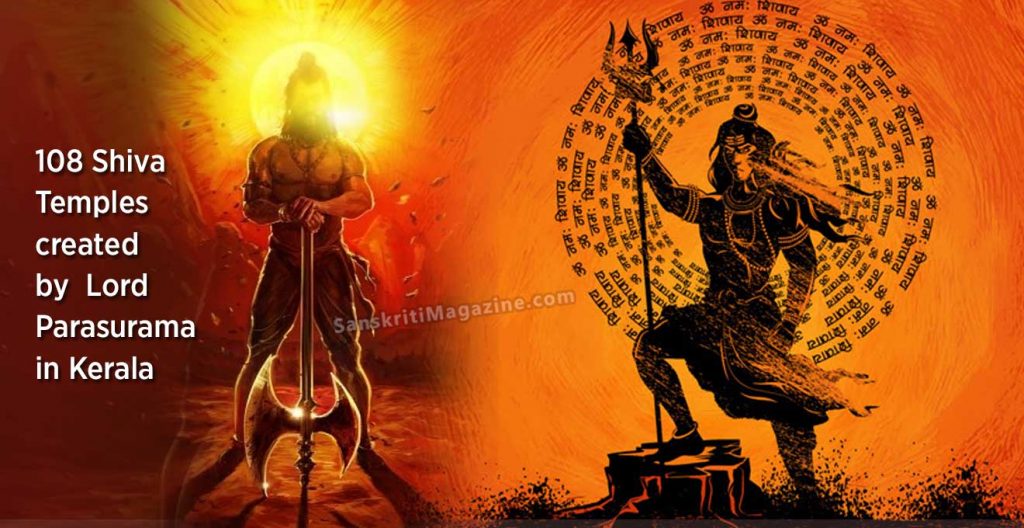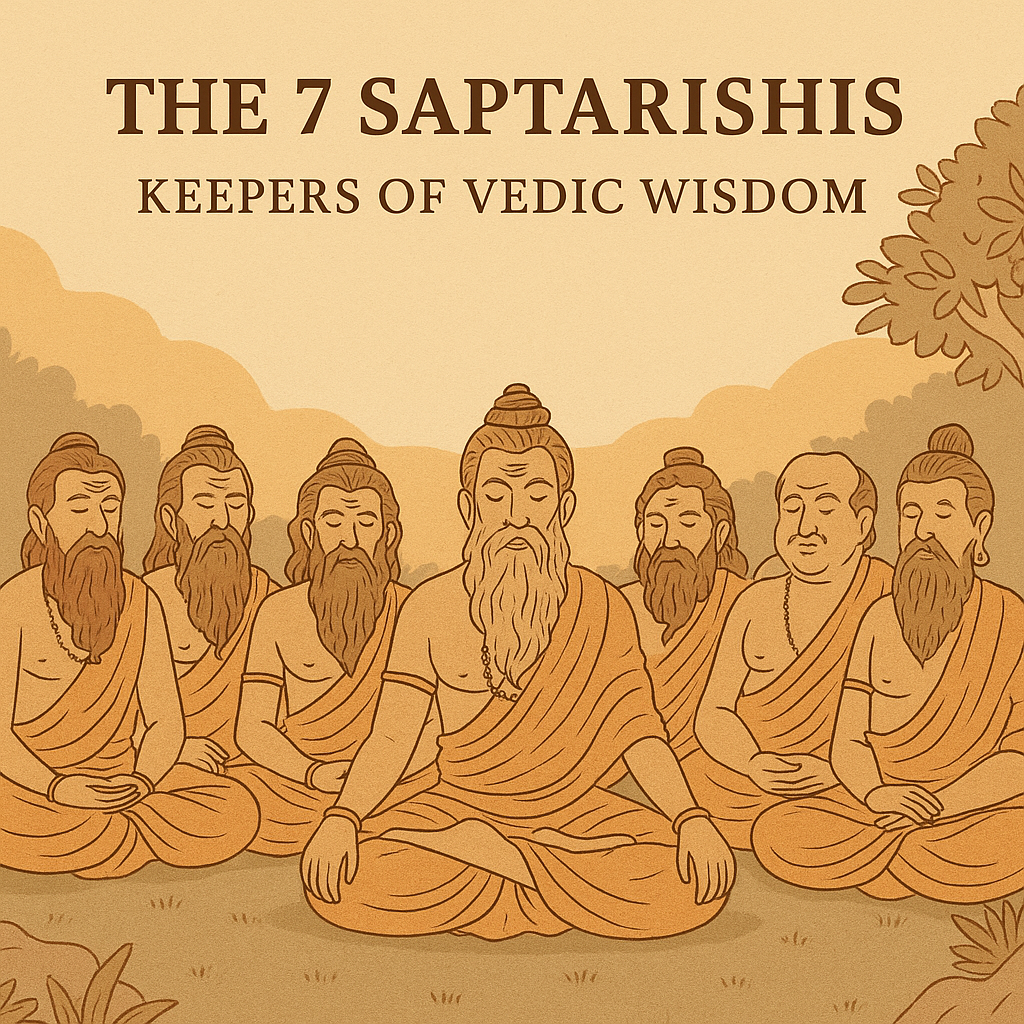According to the legends, Lord Parasurama created the land between Gokarna and Kanyakumari. Lord Parasurama the sixth incarnation of Lord Vishnu was the son of Sage Jamadagni and Renuka. As a mark of repentance for Kshatriya Nigraha sin, Parasurama meditated at Gokarna and invoked Lord Varuna (the Lord of the Oceans). Parasurama asked him for a boon. To absolve himself of the sins he had committed, he wanted to donate some land to the Brahmins.
There was no land available because he already donated the whole land he obtained by the 21 round Kshatriya Nigraha to Sage Kashyapa. Lord Varuna told Parasurama that he would give him as much land as he wished. He told him to fling his Parasu (axe) from where he stood at Gokarna. The land from Gokarna till the point where the axe landed would be given to him was the boon that Lord Varuna promised him. The throw of the `axe’ from Gokarna to Kanyakumari created Kerala. Parasurama donated this land to the Brahmins and settled Brahmins there in 64 gramams or villages.
32 out of the 64 gramams are in the Tulu speaking region (in between Gokarnam and Perumpuzha) and the remaining 32 gramams are in the Malayalam speaking region(in between Perumpuzha and Kanyakumari) in Kerala. Those in Kerala listed in the Keralopatti, the narrative of Kerala history are :
[mks_col]
[mks_one_third]
1. Payyannoor 2. Perumchelloor (Talipparambu)
3. Alatthiyoor
4. Karanthol
5.Chokiram (Shukapuram)
6. Panniyoor 7. Karikkau
8. Isaanamangalam
9. Thrussivaperoor
10. Peruvanam.
11. Chamunda (Chemmanta)
12. Irungatikkootal (Iringalakkuda)
[/mks_one_third]
[mks_one_third]
13. Avattiputhur (Avittathoor)
14. Paravoor
15. Airanikkulam
16. Muzhikkalam
17. Kuzhavur
18. Atavur
19. Chenganatu (Chengamanadu)
20. Ilibhyam
21. Uliyannoor
22. Kalutanatu.
[/mks_one_third]
[mks_one_third]
23. Ettumanoor
24. Kumaranalloor
25. Kadamuri
26. Aranmula
27. Tiruvalla
28. Kidangoor
29.Chengannoor
30. Kaviyoor
31. Venmani and
32. Neermanna (Niranam)
[/mks_one_third]
[/mks_col]
After the creation of these gramams, Parasurama had consecrated 108 Shiva temples and 108 Durga temples for the well-being and prosperity of the people in Kerala . Among these 216 temples, the Lord Shiva of Gokarnam Mahabaleswara Temple in the north and Goddess Kumari of Kanyakumari temple in the south were considered as the protectors of Kerala. The first Shivalaya created by Parasurama was the Thrissivaperoor Vadakkunnatha Temple and the last one was the Thrikkariyoor Mahadeva Temple.
The names of these temples were given in the famous 108 Shivalaya Nama Stothra. This stothra is written in Malayalam and is anonymous. There are many temples with the same place names. Also some old names do not exist or their names have changed. So I have included temples with the same place names as a single group in this 108 shivalayas. So in this list you can find more than 110 Shiva temples in Kerala. It is clear that this stothra was composed in Thrissur region of Kerala because 64 temples were located in this region(9 in Palakkad district, 43 in Thrissur district and 12 in Ernakulam district). District wise distribution of rest of the temples are – 4 in Thiruvanathapuram, 5 in Kollam, 3 in Pathanamthitta, 6 in Alappuzha, 11 in Kottayam, 1 in Idukki, 7 in Malappuram, 4 in Kozhikkode, 1 in Vayanad and 5 in Kannur. Now 2 temples are in Karnataka and one is in Tamil Nadu. The full version of this stothra is given below.
108 Shivalaya Nama Stothra
Sreemad Dakshina Kailasam Sree Perooriraveeswaram
Sucheendram Chowaram Mathoor Trippangott atha Mundayoor
Sree Mandhamkunnu Chowalloor Panancheri Korattiyum
Puramundekkatt Avungannoor Kollooru Thirumangalam
Trikkariyooru Kunnapram Sree Velloor Ashtamangalam
Iyranikkulavum Kainoor Gokarnam Eranakulam
Paarivaloor Adattum nal Parippil Chathamangalam
Paraparambu Trukkooru Panayooru Vyttila
Vaikom Rameswaram randum Ettumanoor Edakkolam
Chemmanthatt Aluva pinne Thirumittakkottu Cherthala
Kallattupuzha Trukkunnu Cheruvathooru Ponganam
Trukkapaleeswaram moonnum Avittathoor Perummala
Kollathum Kattakampala Pazhayanooru Perakom
Athampally Ambilikkadu Cheranellooru Maniyoor
Tali nalum Kodungalloor Vanchiyoor Vanchuleswaram
Panjarkulam Chittukulam Alathoor atha Kottiyoor
Truppalooru Perumtatta Truthala Thiruvallayum
Vazhappally Puthuppally Mangalam Thirunnakkara
Kodumboor Ashtamikkovil Pattanakkadu Thashtayil
Killikkurussiyum Puthoor Kumbhasambhavamandiram
Someswaram cha Vengaloor Kottarakkara Kandiyoor
Palayoorumahadeva Chelloor atha Nedumpura
Mannoor Truchaliyoor Srumgapuram Kottooru Mammiyoor
Parampum tali Thirunavaya Kaarikkodu Cherthala
Kottappuram Muthuvara Valappaya Chendamangalm
Thrukkandiyoor Peruvanam Thiruvaloor Chirakkalum
Ipparanjava noottettum bhakthiyothu padikkuvor
Deham nasikkiletheedum mahadevante sannidhow
Pradoshathil japichal ashesha duritham kedum
Yathra yathra shiva kshethram tatra tatra namamyaham










